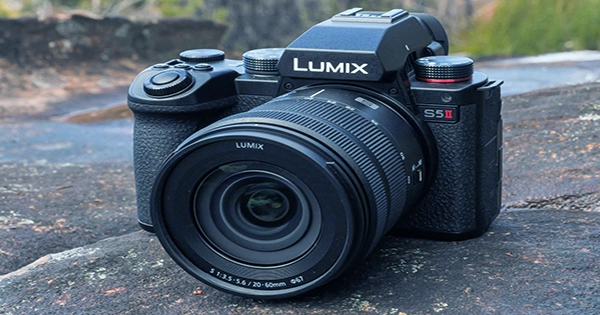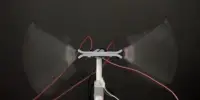Phase Detection Auto-Focus (PDAF) is a feature that many Lumix photographers will be happy to learn about. Panasonic’s announcement of the S5II and S5IIX indicates that the firm will likely stick with the more well-liked (and precise) autofocus type moving forward.
New 24.2-megapixel 35mm full-frame sensors and imaging engines are featured in both of the new mirrorless cameras. The S5IIX is the more expensive of the two and comes with a number of pro-level video features pre-installed. These features include HDMI RAW video data output, USB-C direct recording to an external SSD (solid-state drive), ALL-Intra and ProRes recording, wireless and wired IP streaming, and the ability to record directly to an external SSD (solid-state drive).
The new imaging engine in both cameras, according to Panasonic, offers high quality and roughly 2x faster signal processing for high bit-rate video recording. The cameras are dust- and splash-resistant and have a magnesium alloy complete die-cast body.
Autofocus: The S5II and S5IIX, according to Panasonic, include an autofocus system with 779 AF points and a larger buffer memory than the original S5. These features allow for high-speed burst photography at up to 30 frames per second (AFS/AFC) with an electronic shutter in JPEG or RAW.
The cameras’ IBIS has also been improved considerably. In comparison to the LUMIX S5, the system, according to the manufacturer, can compensate for a substantial camera shake during video recording by about 200%. For still photography, the cameras also use Panasonic’s Dual I.S.2 with a “high-precision” 5-axis gyro sensor.
The new, bigger 3,680K-dot OLED LVF (Live View Finder) is an improvement over the S5 and has a magnification ratio of around 1.52x/0.76x (35mm camera equivalent). A 3.0-inch touch-controlled LCD rear monitor with a 3:2 aspect ratio with 1840K dots is located on the back.
A 96-megapixel High-Resolution Mode is also available. In this mode, the camera quickly shoots eight images, moving the sensor slightly between each shot to capture more resolution and then stitching the images together to create a single image.
Video: Both cameras have a newly developed, small heat management system that allows for indefinite recording and a maximum capture resolution of 4:2:0 10-bit 6K (3:2) video. Additionally, a REAL TIME LUT allows for in-camera color grading, and the 14+ stop V-Log/V-Gamut capture offers great dynamic range and consistent color management.
Additionally, 4K 60p Time Lapse footage is produced in-camera, and 4K HDR video recording is also an option. In this mode, the camera automatically adjusts exposure to reduce sharp contrast shifts between frames, enabling “smooth” transitions from day to night.
A Waveform Monitor, Vector Scope, Zebra Pattern, System Frequency (24.00Hz), Synchro Scan, Fan mode, and a control panel for rapid menu selection are all included as useful filmmaking tools.
Videographers can record four channels of audio using the 3.5mm input port and built-in microphone in conjunction with the optional XLR Microphone Adaptor (DMW-XLR1), which eliminates the need for additional external audio recording equipment.
Last but not least, the S5II and S5IIX support USB 3.2 Gen 2 and have twin SD Card ports (UHS-II x 2) with a selection of Relay Recording, Backup Recording, or Allocation Recording modes. The card access indicator is now housed inside the card slot cover. Additionally, there is a complete HDMI Type A terminal onboard. Additionally, Panasonic has confirmed that RAW data output will be added in a future firmware update.
The Lumix S5 II retails for $3199 for the body alone or $3699 with a 20-60mm F3.5-5.6 lens.
The price of the S5IIX is $3499, or $3999 with the same 20-60mm lens. The S5II is anticipated to be on sale in late January 2023, and the S5IIX will arrive on local shores in late May.
















